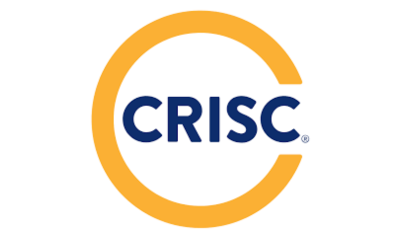How to Ace Your CRISC Exam: A Beginner’s Guide

Conquering the CRISC (Certified in Risk and Information Systems Control) exam is a significant accomplishment for aspiring information security professionals. The CRISC certification validates your expertise in identifying, assessing, and mitigating information system (IS) risks. But with its comprehensive scope, the CRISC exam can seem daunting. Fear not! This beginner’s guide equips you with effective strategies to ace your CRISC exam and take a confident step forward in your cybersecurity career.
Understanding the CRISC Exam Landscape
Before diving into study strategies, let’s establish a foundational understanding of the CRISC exam:
- Exam Format: The CRISC exam is a four-hour, computer-based test with 150 multiple-choice questions.
- Content Domains: The exam covers four crucial domains of information security risk management:
- Domain 1: Identify IT Risk (25%) – This domain focuses on identifying threats and vulnerabilities within information systems.
- Domain 2: Assess IT Risk (25%) – Here, you’ll delve into risk assessment methodologies and tools to evaluate the potential impact of identified risks.
- Domain 3: Respond to IT Risk (25%) – This domain explores strategies for risk mitigation, control implementation, and incident response planning.
- Domain 4: Monitor IT Risk (25%) – This section emphasizes risk monitoring techniques and continuous improvement of information security processes.
- Eligibility: To be eligible for the CRISC exam, you must meet specific experience requirements set forth by ISACA (Information Systems Audit and Control Association), the governing body for the CRISC certification.
Understanding these details will help you tailor your study plan and focus on the most critical areas.
Building a Winning Study Plan
Now, let’s delve into actionable strategies to conquer your CRISC exam:
- Official Resources: Begin by thoroughly exploring ISACA’s official CRISC resources. This includes the CRISC Review Manual, which offers a comprehensive overview of the exam content. Additionally, leverage ISACA’s CRISC exam sample questions to familiarize yourself with the question format and level of difficulty.
- Supplementary Materials: Complement your official resources with high-quality study guides, online courses, and practice exams from reputable providers. These resources often offer in-depth explanations, additional practice questions, and real-world scenarios to solidify your understanding.
- Domain-Specific Focus: Allocate adequate study time for each domain based on its weightage in the exam. While a strong foundation in all domains is crucial, prioritize mastering the higher-weighted sections like “Identify IT Risk” and “Assess IT Risk.”
- Active Learning Techniques: Don’t just passively read through study materials. Engage in active learning techniques like creating flashcards, mind maps, or summarizing key concepts in your own words. This approach enhances information retention and improves your recall during the exam.
- Practice Makes Perfect: Take advantage of practice exams regularly. Practice exams help you identify your knowledge gaps, gauge your test-taking stamina, and familiarize yourself with the exam format. Analyze your performance on practice exams and revisit areas that require improvement.
- Join the Community: Connect with other CRISC aspirants in online or in local study groups. Sharing knowledge, discussing concepts, and learning from each other’s experiences can significantly benefit your preparation.
Exam Day Tips: Be Prepared to Shine
The big day has arrived! Here are some valuable tips to ensure you perform your best on the CRISC exam:
- Get a Good Night’s Sleep: Adequate rest is crucial for optimal cognitive function. Ensure you get a good night’s sleep before the exam day to be alert and focused.
- Arrive Early: Factor in travel time and potential delays. Reaching the exam venue early allows you to settle in comfortably and avoid any last-minute stress.
- Manage Your Time: Strategize your approach to the exam. Allocate a specific amount of time for each domain, leaving ample buffer time to review flagged questions.
- Read Questions Carefully: Don’t rush through the questions. Pay close attention to keywords and subtle differences in answer choices.
- Use the Process of Elimination: If you’re unsure about the correct answer, eliminate options that you know are incorrect. This can increase your chances of selecting the best option.
- Flag Uncertain Questions: If you encounter challenging questions, don’t waste too much time on them. Mark them for review and move on. After completing the exam, revisit the flagged questions and allocate remaining time to answer them thoughtfully.
CRISC Certification FAQs
Here are some frequently asked questions regarding the CRISC certification:
Q. How long is the CRISC certification valid?
A. The CRISC training in London is valid for three years. To maintain your certification, you must fulfill Continuing Professional Education (CPE) requirements set forth by ISACA.
Q. What resources are best for studying the CRISC exam?
A. ISACA’s official CRISC Review Manual and practice exams are excellent starting points. Supplement these with high-quality study guides, online courses, and practice exams from reputable providers.
Q. Is experience required to take the CRISC exam?
A. Yes, specific experience requirements mandated by ISACA are necessary to be eligible for the CRISC exam. You can find details on these requirements on the ISACA website.
Q. What are the benefits of earning the CRISC certification?
A. The CRISC certification in UK validates your expertise in information security risk management, enhancing your career prospects and earning potential within the cybersecurity domain. It also demonstrates your commitment to professional development and staying current with evolving cybersecurity best practices.


 English
English 

